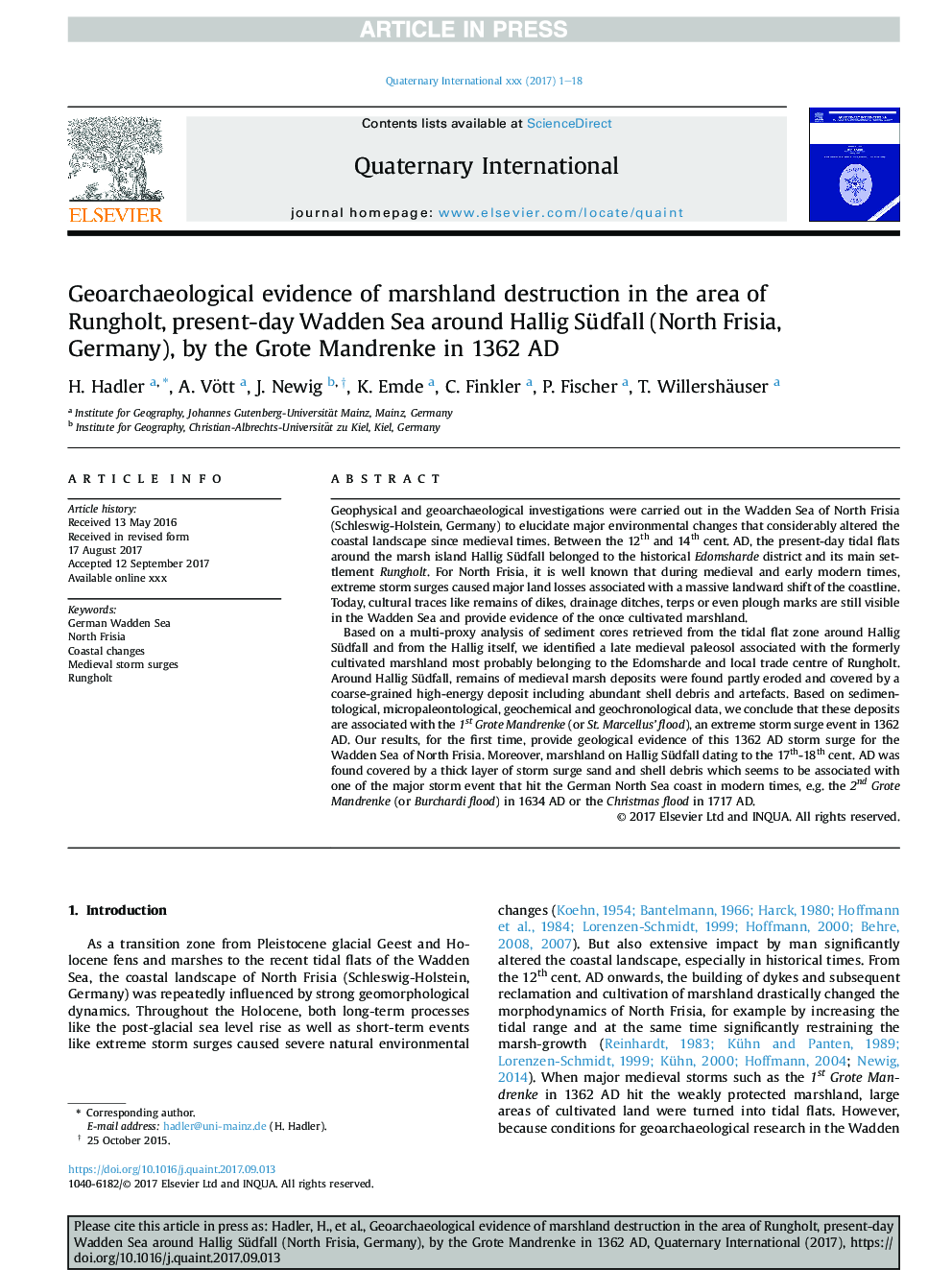| کد مقاله | کد نشریه | سال انتشار | مقاله انگلیسی | نسخه تمام متن |
|---|---|---|---|---|
| 7449860 | 1484040 | 2018 | 18 صفحه PDF | دانلود رایگان |
عنوان انگلیسی مقاله ISI
Geoarchaeological evidence of marshland destruction in the area of Rungholt, present-day Wadden Sea around Hallig Südfall (North Frisia, Germany), by the Grote Mandrenke in 1362 AD
دانلود مقاله + سفارش ترجمه
دانلود مقاله ISI انگلیسی
رایگان برای ایرانیان
موضوعات مرتبط
مهندسی و علوم پایه
علوم زمین و سیارات
زمین شناسی
پیش نمایش صفحه اول مقاله

چکیده انگلیسی
Based on a multi-proxy analysis of sediment cores retrieved from the tidal flat zone around Hallig Südfall and from the Hallig itself, we identified a late medieval paleosol associated with the formerly cultivated marshland most probably belonging to the Edomsharde and local trade centre of Rungholt. Around Hallig Südfall, remains of medieval marsh deposits were found partly eroded and covered by a coarse-grained high-energy deposit including abundant shell debris and artefacts. Based on sedimentological, micropaleontological, geochemical and geochronological data, we conclude that these deposits are associated with the 1st Grote Mandrenke (or St. Marcellus' flood), an extreme storm surge event in 1362 AD. Our results, for the first time, provide geological evidence of this 1362 AD storm surge for the Wadden Sea of North Frisia. Moreover, marshland on Hallig Südfall dating to the 17th-18th cent. AD was found covered by a thick layer of storm surge sand and shell debris which seems to be associated with one of the major storm event that hit the German North Sea coast in modern times, e.g. the 2nd Grote Mandrenke (or Burchardi flood) in 1634 AD or the Christmas flood in 1717 AD.
ناشر
Database: Elsevier - ScienceDirect (ساینس دایرکت)
Journal: Quaternary International - Volume 473, Part A, 15 April 2018, Pages 37-54
Journal: Quaternary International - Volume 473, Part A, 15 April 2018, Pages 37-54
نویسندگان
H. Hadler, A. Vött, J. Newig, K. Emde, C. Finkler, P. Fischer, T. Willershäuser,